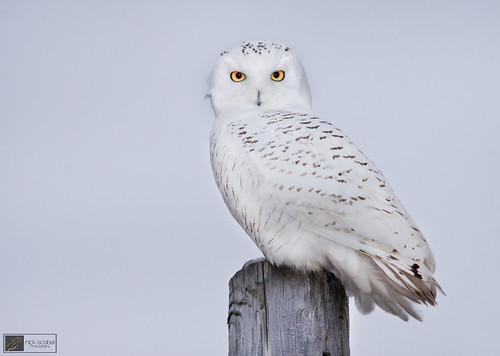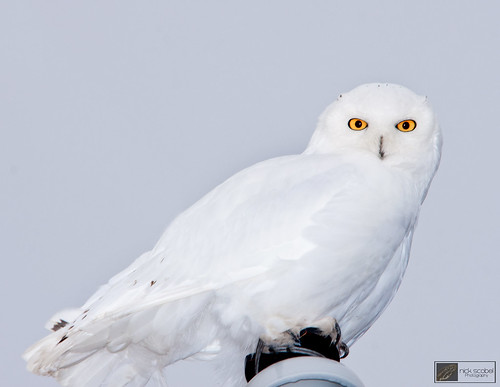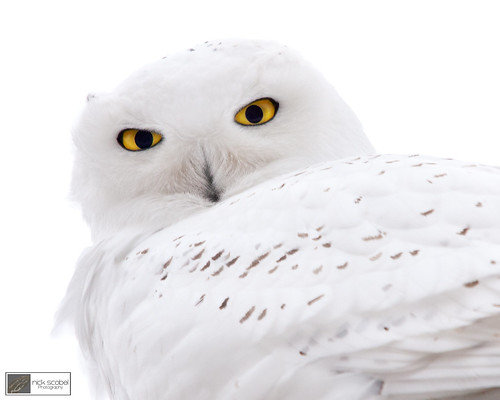 |
| SNOW Observations, Nov. - Dec. 2014, ebird.org |
It's quite staggering when you view it from this perspective, hundreds of snowies have been observed in a month and half span. You can also see how much the owls rely on waterways as navigation points, particularly along the Great Lakes coasts, St. Lawrence Seaway, and Atlantic coast. This week, I was able to get out twice to hunt some areas and see what I could observe. When I arrived to a large agricultural area not far from Saginaw Bay, I was astounded by the number of snowy owls in a 8-10 square mile area.
 |
| Snowy Owl (Bubo scandiacus), Bay County, MI |
At a rough county, I observed at least 17 different owls in a fairly large area. I'm not sure as to whether this was a group traveling together, loosely at least. Snowies are fairly solitary birds, but it's not uncommon to see them in large clusters in a few square mile area. Either way, it was way more individuals than I observed in a single day all of last winter.
 |
| Snowy Owl (Bubo scandiacus), Tuscola County, MI |
The other thing that I found interesting was the number of adult birds that I observed. Most snowies that irrupt in a given winter are first year immatures which move south to escape the harsh winters of the tundra to hone their hunting skills where prey is less scarce. But I encountered several adult birds, including the stunning adult male shown above. Project SNOWstorm has also had at least two owls that they fitted with radio transmitters last winter return to the east coast this fall. There are a lot of factors that determine the number of snowies that irrupt, but if food is scarce, some adults will even move south.
Will the winter of 2014-2015 break the record numbers from last year? Probably not. But it certainly seems as though we are going to get another strong showing of these ghosts of the tundra. Stay tuned.



No comments:
Post a Comment